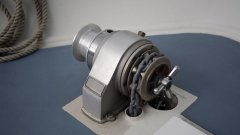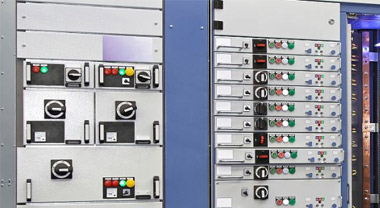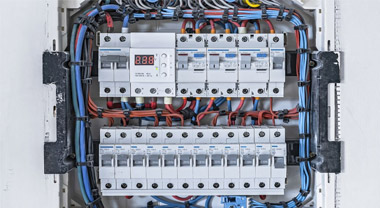Can I replace a 15 amp breaker with a 20 amp?
In this comprehensive guide, we'll explore whether you can replace a 15-amp breaker with a 20-amp breaker and the potential consequences of doing so. It's essential to understand the implications of such a change to ensure the safety and proper functioning of your electrical system. Let's dive in!
Table of Contents
- Understanding Breaker Amp Ratings
- Reasons for Upgrading a Breaker
- risks of replacing a 15 amp breaker with a 20 amp
- How to Safely Upgrade a Circuit Breaker
- When to Consult a Professional Electrician
- Summary
1. Understanding Breaker Amp Ratings
Circuit breakers are designed to protect your electrical system from overloads and short circuits. They come in various amp ratings, with 15-amp and 20-amp breakers being the most common in residential settings. The amp rating of a breaker corresponds to the maximum current it can handle before tripping and disconnecting the power supply to the circuit.
A 15-amp breaker is typically used for general lighting and receptacle circuits, whereas a 20-amp breaker is often reserved for circuits with higher power demands, such as kitchen appliances and small appliances. It's crucial to use the appropriate breaker amp rating for each circuit to prevent overloading and potential electrical hazards.
2. Reasons for Upgrading a Breaker
There are various reasons you might consider upgrading a breaker from 15 amps to 20 amps, including:
- Increased Power Demands: If you're adding new appliances or devices to a circuit that requires more power, you might consider upgrading the breaker to handle the additional load.
- Frequent Tripping: If the circuit breaker trips frequently, it could be a sign that the current amp rating is insufficient for the circuit's load. However, frequent tripping could also indicate an underlying electrical issue, so it's essential to diagnose the problem before upgrading the breaker.
- Code Compliance: In some cases, local building codes and regulations may require you to upgrade a breaker to meet specific safety standards or accommodate new installations.
While upgrading a breaker can provide additional power capacity for a circuit, it's essential to understand the potential risks and ensure that the circuit's wiring can handle the increased load.
3. Risks of Replacing a 15 Amp Breaker with a 20 Amp
Replacing a 15-amp breaker with a 20-amp breaker can be risky if not done correctly. Some potential risks include:
- Overloading the Wiring: A 15-amp breaker is typically connected to 14 AWG (American Wire Gauge) wire, which is not rated to handle the 20-amp current. Upgrading the breaker without upgrading the wiring can lead to overheating, melted insulation, and potential electrical fires.
- Violation of Building Codes: Making unauthorized changes to your electrical system can result in violations of local building codes and regulations, leading to fines or penalties.
- Voided Insurance: If an electrical issue occurs due to an improper breaker upgrade,your homeowner's insurance may not cover the damages, leaving you financially responsible for any repairs or replacements.
- Compromised Safety: Improperly upgrading a breaker can create an unsafe electrical environment that increases the risk of electrical shock, fires, and other hazards.
Considering these risks, it's crucial to approach breaker upgrades with caution and ensure that your electrical system can handle the increased load.
4. How to Safely Upgrade a Circuit Breaker
If you've determined that upgrading a breaker from 15 amps to 20 amps is necessary, follow these steps to ensure a safe and successful upgrade:
- Evaluate the Circuit: Assess the circuit's wiring to ensure it can handle the increased load. This typically means upgrading from 14 AWG wire to 12 AWG wire, which is rated for 20 amps.
- Verify Code Compliance: Check your local building codes and regulations to ensure the breaker upgrade is compliant with all requirements. If necessary, obtain any permits or approvals before proceeding with the upgrade.
- Consult a Professional Electrician: Upgrading a circuit breaker and associated wiring should be done by a licensed electrician to ensure the work is performed correctly and safely. Attempting a DIY upgrade without proper knowledge and experience can result in serious risks to your home and personal safety.
- Test the Circuit: After the breaker and wiring upgrade is complete, have the electrician test the circuit to ensure it's functioning correctly and safely handling the increased load.
By following these steps and working with a professional electrician, you can safely upgrade your breaker and ensure your electrical system is up to code and functioning efficiently.
5. When to Consult a Professional Electrician
Upgrading a circuit breaker, especially when changing the amp rating, should always be done by a licensed electrician. Electricians have the knowledge, experience, and tools to handle electrical work safely and efficiently. They can also help diagnose any underlying issues that may be causing frequent breaker trips or other problems with your electrical system.
In addition, professional electricians can ensure that your breaker upgrade is compliant with local building codes and regulations, preventing potential fines or penalties and ensuring the safety of your home and family.
6. Summary
While it's possible to replace a 15-amp breaker with a 20-amp breaker, doing so can be risky if not done correctly. Upgrading the breaker without upgrading the associated wiring can lead to overloading, code violations, and safety hazards. To safely upgrade a breaker, evaluate the circuit, verify code compliance, and consult a professional electrician to perform the work. By taking these precautions, you can ensure the proper functioning and safety of your electrical system.




